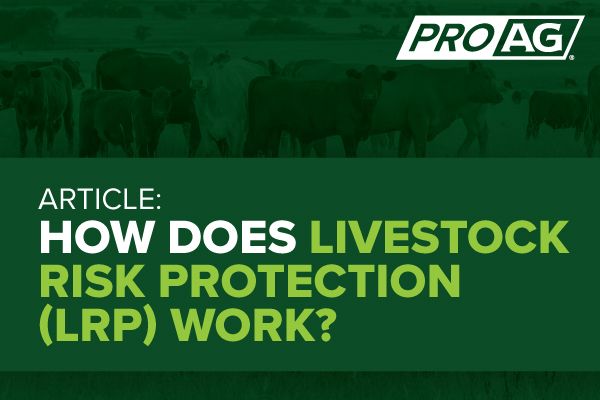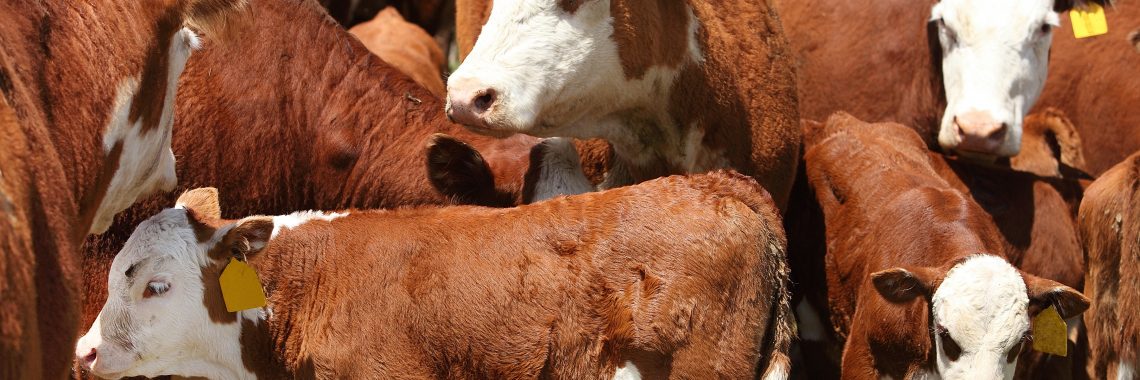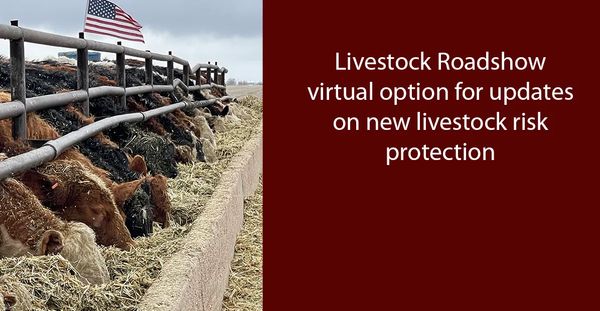Elevate Your Competence with Bagley Risk Management
Elevate Your Competence with Bagley Risk Management
Blog Article
Comprehending Animals Risk Protection (LRP) Insurance Policy: A Comprehensive Overview
Navigating the world of livestock risk security (LRP) insurance coverage can be an intricate undertaking for several in the farming market. From how LRP insurance operates to the different insurance coverage choices offered, there is much to discover in this detailed guide that might possibly shape the method livestock manufacturers come close to threat management in their businesses.

Just How LRP Insurance Policy Works
Occasionally, comprehending the technicians of Animals Risk Protection (LRP) insurance coverage can be complex, but damaging down just how it functions can provide clarity for farmers and breeders. LRP insurance policy is a threat administration device developed to shield livestock manufacturers versus unforeseen price decreases. It's important to note that LRP insurance is not a profits assurance; instead, it focuses solely on price threat defense.
Qualification and Insurance Coverage Options

When it involves coverage choices, LRP insurance policy supplies producers the flexibility to select the insurance coverage degree, coverage period, and endorsements that ideal match their risk management requirements. Insurance coverage degrees usually vary from 70% to 100% of the anticipated ending value of the insured animals. Manufacturers can additionally choose insurance coverage periods that line up with their production cycle, whether they are insuring feeder cattle, fed livestock, swine, or lamb. Endorsements such as rate risk defense can further personalize protection to shield versus unfavorable market fluctuations. By comprehending the eligibility requirements and protection choices offered, livestock producers can make informed decisions to manage threat effectively.
Benefits And Drawbacks of LRP Insurance
When evaluating Animals Danger Protection (LRP) insurance coverage, it is vital for livestock manufacturers to consider the disadvantages and benefits fundamental in this risk monitoring tool.

One of the key advantages of LRP insurance coverage is its capacity to give protection against a decline in livestock prices. Furthermore, LRP insurance provides a level of versatility, allowing manufacturers to tailor insurance coverage degrees and plan periods to fit their particular needs.
One restriction of LRP insurance is that it does not shield versus all types of dangers, such as disease episodes or natural disasters. It is critical for manufacturers to carefully analyze their specific risk direct exposure and financial scenario to figure out if LRP insurance is the ideal danger management device for their operation.
Recognizing LRP Insurance Coverage Premiums

Tips for Making Best Use Of LRP Advantages
Making best use of the benefits of Livestock Risk Security (LRP) insurance coverage calls for critical preparation and proactive risk management - Bagley Risk Management. To make the most of your LRP protection, think about the adhering to suggestions:
On A Regular Basis Examine Market Problems: Keep informed concerning market patterns and rate changes in the livestock sector. By keeping track of these elements, you can make informed decisions about when to purchase LRP coverage to protect against possible losses.
Establish Realistic Insurance Coverage Degrees: When picking coverage levels, consider your manufacturing expenses, market price of animals, and potential threats - Bagley Risk Management. Setting practical coverage levels ensures that you are properly protected without overpaying for unneeded insurance policy
Expand Your Insurance Coverage: Rather than depending solely on LRP insurance policy, take into consideration diversifying your danger administration methods. Integrating LRP with other risk monitoring devices such as futures agreements or choices can supply extensive protection against market unpredictabilities.
Evaluation and Adjust Insurance Coverage Routinely: As market problems change, periodically review your LRP insurance coverage to ensure it straightens with your present risk direct exposure. Adjusting insurance coverage levels and timing of acquisitions can help maximize your risk defense approach. By complying with these tips, you can make best use of the benefits of LRP insurance coverage and safeguard your livestock procedure against unpredicted click here to find out more dangers.
Verdict
In verdict, livestock danger defense (LRP) insurance is a beneficial tool for farmers to my sources handle the financial dangers related to their animals operations. By recognizing how LRP functions, qualification and coverage choices, along with the benefits and drawbacks of this insurance policy, farmers can make educated choices to secure their livelihoods. By very carefully considering LRP premiums and applying strategies to optimize advantages, farmers can mitigate potential losses and make certain the sustainability of their procedures.
Animals producers interested in getting Livestock Danger Security (LRP) insurance policy can explore a range of eligibility criteria and insurance coverage choices customized to their details animals procedures.When it comes to insurance coverage alternatives, LRP insurance provides producers the versatility to choose the protection level, protection period, and endorsements that best fit their risk administration demands.To comprehend the details of Animals Risk Defense (LRP) insurance policy totally, recognizing the variables affecting LRP insurance coverage premiums is critical. LRP insurance policy costs are identified by different aspects, including the insurance coverage degree picked, the expected price of animals at the end of the insurance coverage period, the type of animals being insured, and the length of the insurance coverage period.Review and Readjust Insurance Coverage Consistently: As market conditions transform, regularly examine your LRP protection to guarantee it straightens with your present risk direct exposure.
Report this page